
Panspermia is the hypothesis, first proposed in the 5th century BCE by the Greek philosopher Anaxagoras, that life exists throughout the Universe, distributed by space dust, meteoroids, asteroids, comets, and planetoids, as well as by spacecraft carrying unintended contamination by microorganisms. Panspermia is a fringe theory with little support amongst mainstream scientists. Critics argue that it does not answer the question of the origin of life but merely places it on another celestial body. It is also criticized because it cannot be tested experimentally.
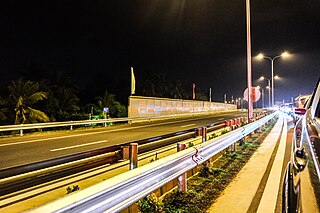
Transport in Sri Lanka is based on its road network, which is centred on the country's commercial capital Colombo. A rail network handles a portion of Sri Lanka's transport needs. There are navigable waterways, harbours and three international airports: in Katunayake, 35 kilometres (22 mi) north of Colombo, in Hambantota, and in Jaffna.
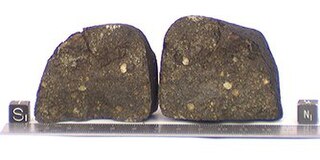
Cosmochemistry or chemical cosmology is the study of the chemical composition of matter in the universe and the processes that led to those compositions. This is done primarily through the study of the chemical composition of meteorites and other physical samples. Given that the asteroid parent bodies of meteorites were some of the first solid material to condense from the early solar nebula, cosmochemists are generally, but not exclusively, concerned with the objects contained within the Solar System.
Ragging is the term used for the so-called "initiation ritual" practiced in higher education institutions in the Indian subcontinent, including India, Pakistan, Bangladesh, and Sri Lanka. The practise is similar to hazing in North America, bizutage in France, praxe in Portugal, and other similar practices in educational institutions across the world. Ragging involves abuse, humiliation, or harassment of new entrants or junior students by the senior students. It often takes a malignant form wherein the newcomers may be subjected to psychological or physical torture. In 2009, the University Grants Commission of India imposed regulations upon Indian universities to help curb ragging and launched a toll-free 'anti-ragging helpline'.

Orgueil is a scientifically important carbonaceous chondrite meteorite that fell in southwestern France in 1864.
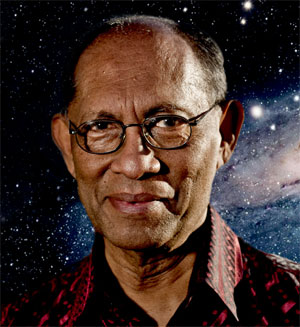
Nalin Chandra Wickramasinghe is a Sri Lankan-born British mathematician, astronomer and astrobiologist of Sinhalese ethnicity. His research interests include the interstellar medium, infrared astronomy, light scattering theory, applications of solid-state physics to astronomy, the early Solar System, comets, astrochemistry, the origin of life and astrobiology. A student and collaborator of Fred Hoyle, the pair worked jointly for over 40 years as influential proponents of panspermia. In 1974 they proposed the hypothesis that some dust in interstellar space was largely organic, later proven to be correct.
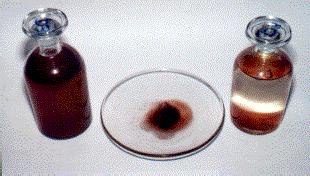
The Kerala red rain phenomenon was a blood rain event that occurred in Wayanad district region of Malabar on Monday, 15 July 1957 and the colour subsequently turned yellow and also 25 July to 23 September 2001, when heavy downpours of red-coloured rain fell sporadically on the southern Indian state of Kerala, staining clothes pink. Yellow, green and black rain was also reported. Coloured rain was also reported in Kerala in 1896 and several times since, most recently in June 2012, and from 15 November 2012 to 27 December 2012 in eastern and north-central provinces of Sri Lanka.
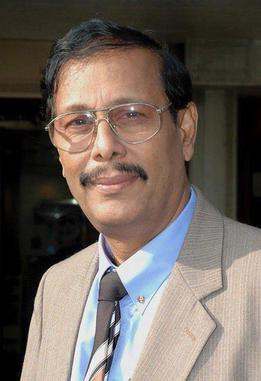
Ariyanayagam Chandranehru was a Sri Lankan Tamil merchant seaman, politician and Member of Parliament.

A vaṭadāge is a type of Buddhist structure found in Sri Lanka. It also known as a dage, thupagara and a cetiyagara. Although it may have had some Indian influence, it is a structure that is more or less unique to the architecture of ancient Sri Lanka. Vatadages were built around small stupas for their protection, which often enshrined a relic or were built on hallowed ground. Circular in shape, they were commonly built of stone and brick and adorned with elaborate stone carvings. Vatadages may have also had a wooden roof, supported by a number of stone columns arranged in several concentric rows.
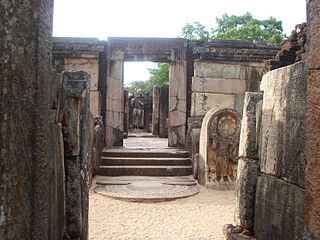
Hatadage is an ancient relic shrine in the city of Polonnaruwa, Sri Lanka. It was built by King Nissanka Malla, and had been used to keep the Relic of the tooth of the Buddha. The Hatadage had been built using stone, brick and wood, although only parts of the brick and stone walls now remain. It appears to have been a two-storey structure, but the upper storey has now been destroyed. Three Buddha statues carved out of granite rock are located within a chamber of the shrine.
Richard Brice Hoover is a physicist who has authored 33 volumes and 250 papers on astrobiology, extremophiles, diatoms, solar physics, X-ray/EUV optics and meteorites. He holds 11 U.S. patents and was 1992 NASA Inventor of the Year. He was employed at the United States' NASA Marshall Space Flight Center from 1966 to 2012, where he worked on astrophysics and astrobiology. He established the Astrobiology Group there in 1997 and until his retirement in late 2011 he headed their astrobiology research. He conducted research on microbial extremophiles in the Antarctic, microfossils, and chemical biomarkers in precambrian rocks and in carbonaceous chondrite meteorites. Hoover has published claims to have discovered fossilized microorganisms in a collection of select meteorites on multiple occasions.
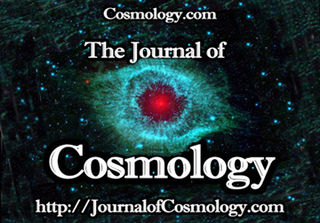
The Journal of Cosmology describes itself as a peer-reviewed open access scientific journal of cosmology, although the quality of the process has been questioned. The journal has been closely related historically with a similar online website, Cosmology and Journal of Astrobiology and Space Science Reviews., as all three were founded by neuroscientist Rhawn Gabriel Joseph. Rhawn Joseph established the journal in 2009, published by Cosmology Science Publishers, and it was sold to Modern Cosmology Associates in 2011. Rudolph Schild is the editor-in-chief.
Directed panspermia is the deliberate transport of microorganisms into space to be used as introduced species on lifeless but habitable astronomical objects.

George Edmund de Silva was a Ceylonese lawyer and politician. He was the first Cabinet Minister of Industries, Industrial Research and Fisheries in independent Sri Lanka (1947–1948), a Member of Parliament and State Council.
Events from the year 2014 in Sri Lanka.
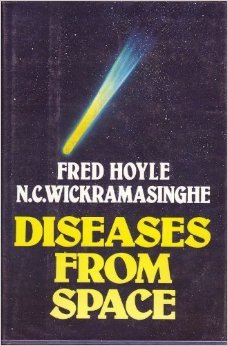
Diseases from Space is a book published in 1979 that was authored by astronomers Fred Hoyle and Chandra Wickramasinghe, where they propose that many of the most common diseases which afflict humanity, such as influenza, the common cold and whooping cough, have their origins in extraterrestrial sources. The two authors argue the case for outer space being the main source for these pathogens or at least their causative agents.

The Central Expressway (E04), is an under construction road project that will link the Sri Lankan capital, Colombo, with Dambulla & Kandy. It will provide a fast alternative to the existing A1 Colombo - Kandy & A6 Ambepussa - Trincomalee Highways. The Expressway starts at the Kadawatha Interchange on the E02 Outer Circular Expressway and ends in Dambulla at the A9 Kandy - Jaffna Highway, traversing through Gampaha, Kurunegala & Matale Districts. A link Expressway starting from Pothuhera & ending in Galagedara will provide access to the Kandy District.
Kalupage Austin Fernando is a Sri Lankan civil servant and the current Sri Lankan High Commissioner to India. He had previously served as Secretary to the President of Sri Lanka, Defence Secretary and Governor of the Eastern Province.

Umaria Binthy Ayesha Sinhawansa, popularly as Umaria Sinhawansa, is a Sri Lankan pop, R&B and jazz singer. She is the youngest musician to be ever awarded A-Grade by Sri Lanka Broadcasting Corporation. She has won the 'Kala Keerthi Abhimani' award for her contribution to Sri Lanka's music industry. Umaria began her music career at age 11 in the 2005, performing with her sister at various stages. She made her debut as a playback singer in the film Asai Man Piyabanna. And also she has won silver awards at Pan Asia Music International Music Competition and the Crimea Music Fest international competition.













